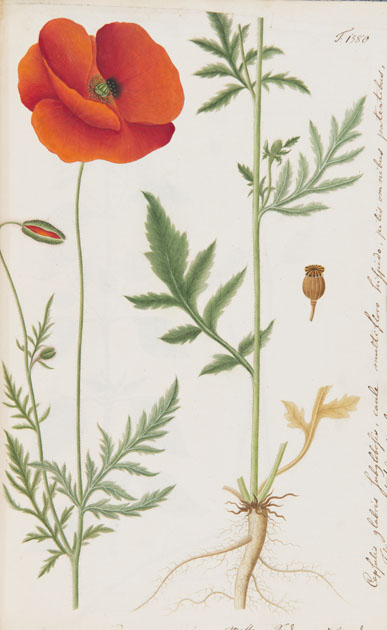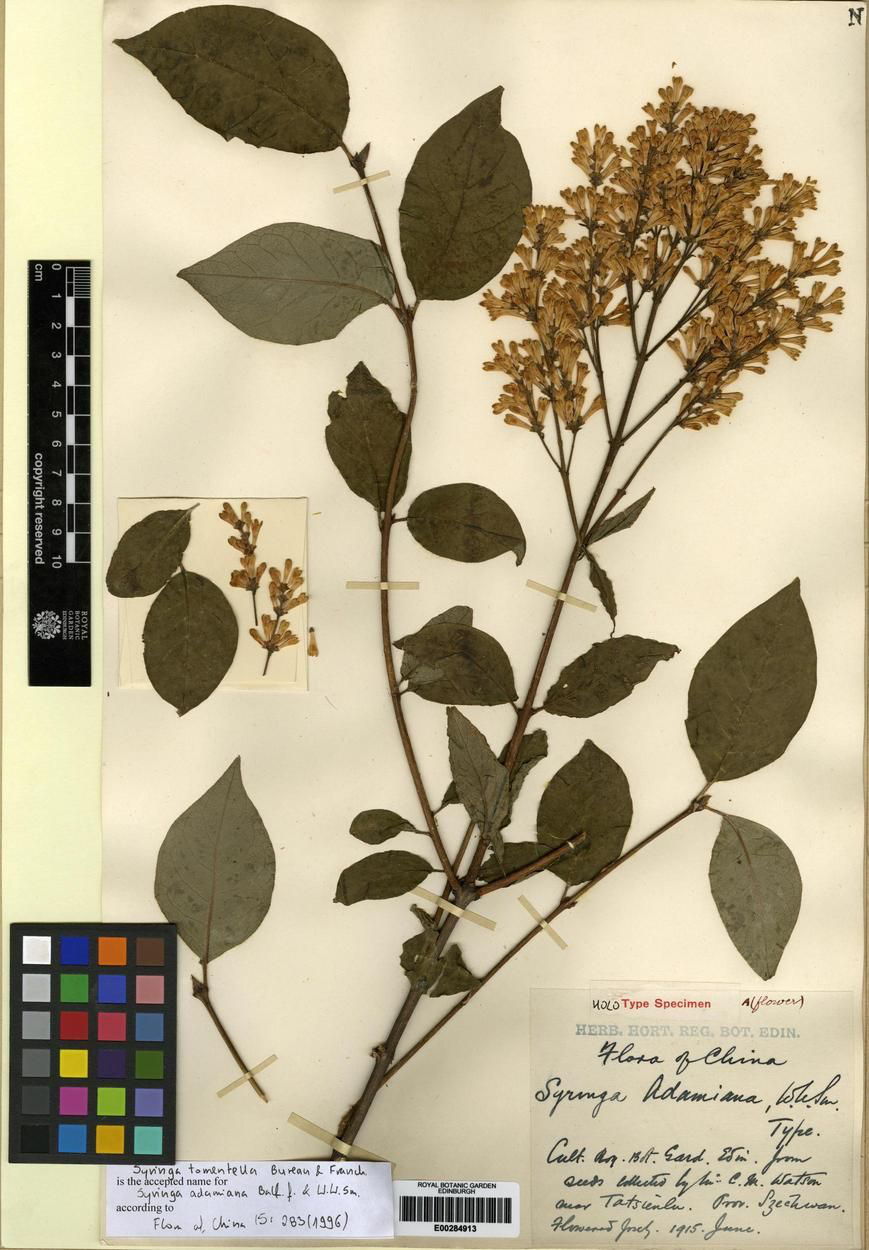In researching this series of centenary blogs in which I research each of our former staff members who enlisted during the First World War and are named on our War Memorial I have often found myself in unfamiliar territory – researching the politics, tactics and battles of the opening stages of the conflict. I’m not complaining – my unfamiliar territory is considerably safer than the unfamiliar territory our newly recruited soldiers found themselves in, but even so, I had become so entrenched (as it were) in unravelling Gallipoli, it had slipped my mind that one of our fallen had died on the Western Front in May 1915 – I was a little out of touch with what was happening there at that time and needed to find out quickly – thank goodness for the internet and the local library…
Thomas Adam joined the staff of RBGE as a labourer on the 31st July 1907. The fact that he was ‘mobilised’ according to our Roll of Honour on the 6th August 1914, as opposed to enlisting, indicates that he had some prior experience of serving in the army – this is backed up by the fact that he joined (or rejoined?) the 2nd Battalion of the Scots Guards (1st and 2nd battalions are usually the ‘established army’ – the battalions formed using Kitchener’s new recruits at the start of the War would have had higher numbers, so it was apparently seen as a badge of honour to be in a 1st or 2nd battalion). I have been able to find a record to support this – Adam’s War Service card held in the RBGE archives shows that as well as being awarded a ‘Mons Star’ medal (another name for the 1914 Star – he also won the Victory and the British War Medal), he also possessed a South African Medal. This was established in 1900 to award to those participating in the 2nd Boer War between 1899 and 1902. Adam was born in 1878 so would certainly have been old enough to have served at the end of the 19th century, beginning of the 20th, although the 1901 census has him as a ‘Labourer in a Railway Yard’.

Papaver rhoeas from Oeder, G.C. / Hornemann, J.W. (ed). Flora Danica. V. 9. Haefte 27. T. 1580. (1818)
The British Army’s Medal Roll Index Cards show that Adam was part of the B.E.F. – the British Expeditionary Force, and that his ‘Disembarkation Date’ was the 7th October 1914 – the date he’d have landed at Zeebrugge in Belgium after mustering at the Tower of London. But what then? The 2nd Scots Guards became part of the 20th Brigade of the 7th Division, ordered initially to defend Antwerp, but as the city was already falling as they arrived, they assisted instead in the westward evacuation of the Belgian Army before entrenching themselves in front of Ypres. They then took part in the First Battle of Ypres in October and November 1914, defending that city from the advancing German Army.
In 1915, the Scots Guards found themselves supporting the French ambition to force the now entrenched German lines back, albeit with limited success. At this point, the War was becoming one of attrition, of digging in, building and defending trenches meaning vast numbers of men and artillery needed to be dispatched just to reach enemy trenches, let alone to break through them. The French wanted to push eastward to force the Germans out of France and Belgium. They felt the British weren’t pulling their weight, so, partly to counter these accusations, the war of attrition was entered with the British Army’s first planned offensive battle at Neuve Chappelle in March 1915. Some ground was gained here, but the objective of taking the high ground of Aubers Ridge behind Neuve Chappelle failed, mainly due to communication difficulties leading to delays resulting in crucial lost opportunities.
Returning to Private Thomas Adam, he and his 2nd Scots Guards were positioned to the north of Neuve Chappelle during this offensive, gaining some ground on the 3rd day and taking some four hundred German prisoners before their progress was stalled at the foot of Aubers Ridge.
In April 1915, the Germans attacked the Western front line which began the 2nd Battle of Ypres. The 2nd Scots Guards were not involved in this but it’s worth including here as the Germans began their attack by releasing large clouds of chlorine gas – the first time this had been done during WW1, introducing a new element of horror to the men in the trenches and one which I believe scared them more than facing the enemy’s guns.
Another attempt was made to take Aubers Ridge at the Battle of that name on the 9th May 1915 – it failed, mainly because the Generals were still using broadly the same tactics employed at Neuve Chappelle, and the attack was halted after a day. The French were having more success further south down the front at Vimy Ridge, and were keen for the British to launch another offensive quickly, to keep the pressure on the German army and prevent them from moving reinforcements south to attack the French at Vimy. A day after the Battle of Aubers Ridge, Adam’s tired and depleted 2nd Scots Guards as part of the 7th Division found themselves being moved 5km south to the north of Festubert, the idea being to change the area of attack and hopefully find easier terrain and a less well entrenched enemy. It was not to be. The Germans had built their defences well here too and it was considerably easier to defend a trench than it was to attack it. The Allied troops were running low on stamina and weaponry – much ammunition had already been used and a large quantity had also been sent to the troops attempting a similar breach through enemy lines at Gallipoli.
A two day artillery bombardment of the German trenches east of Festubert began on the 13th May, the infantry being sent in at 11:30pm two days later on the 15th. They were to aim to advance only around 900m – some battalions had successes, others made less progress and another bombardment was ordered before the attack was renewed at 3:15am, but even these few hours overnight gave the Germans time to move reinforcements in. This second attack stalled, and the troops were ordered to hold their positions whilst another bombardment took place followed by more reinforcements entering No Man’s Land at 3:15am on the morning of the 16th May. Again they were met by machine gun fire from the Germans and again the attack was stalled for a further bombardment.
Finally, it was now Private Thomas Adam’s turn to go ‘over the top’. At 7am on the 16th May, the 2nd Scots Guards and the 2nd Border Regiment, both of the 7th Division led a charge towards the German trenches. A good start was made and they did reach the trenches, despite the 2nd Border Regiment getting into difficulty when they were hit by their own bombardment. They could advance no further than the enemy front line, however. These trenches were flooded and impossible to move through, they were being hit by machine guns firing along the lines, and fighting became hand to hand. The 7th Division were ordered to keep going, and to attempt to join up with the 2nd Division further south, but they’d been set an impossible task, the attack eventually abandoned mid-afternoon with no significant ground gained.
The Battle of Festubert continued in much the same way until the 25th May, when ammunition was seen as too low and casualties too high to continue. The German line had been pushed back around a kilometre, but they seemed stronger than ever, losing around 500 men compared to 16,648 Allied soldiers killed, wounded or missing. The French failed to take Vimy Ridge, but they would have fared much worse had the British and other Allied Regiments not been keeping the Germans busy to the north. It had been a catastrophic few months though, with the higher ground to the east of Neuve Chapelle, Aubers Ridge and Festubert still beyond reach. Lessons had been learned, the trials and errors of the 1915 offensives eventually evolving into the successful offensives of 1918. After Festubert though, a period of relative calm fell over the Western front whilst the Allies retired to regroup and formulate a fresh offensive which was to become the Battle of Loos in September of 1915. All of this was neither here nor there to Thomas Adam though. After just over 9 months of service in the field in Flanders, he was killed during the Festubert offensive at some point on the 16th May 1915. He has no known grave and is remembered on the Le Touret Memorial in Pas-de-Calais in France, and on the War Memorial at RBGE.
Isaac Bayley Balfour, Regius Keeper at RBGE at the time, also chose to remember him by naming a plant in his honour– Syringa adamiana, now known as S. tomentella, a plant found near Tatsienlu in Sichuan province, S.W. China by C.M. Watson. He sent seed to Edinburgh where it was successfully cultivated, flowering freely in June 1915 – “a graceful species and of value for its late flowering…By the specific name it is desired to hold in memory Private Thomas Adam, 2nd Scots Guards, a gardener [labourer] of the staff of the Royal Botanic Garden, Edinburgh, who fell in action in Flanders on 16th May 1915.” (Notes from the Royal Botanic Garden Edinburgh, v9, 1916, p131)
This post could not have been written without the excellent description of what was happening on the Western Front in 1915 in “The Death of Glory: The Western Front 1915” by Robin Neillands, John Murray (Publishers), 2006, and without the use of genealogical research by Garry Ketchen – thank you.


